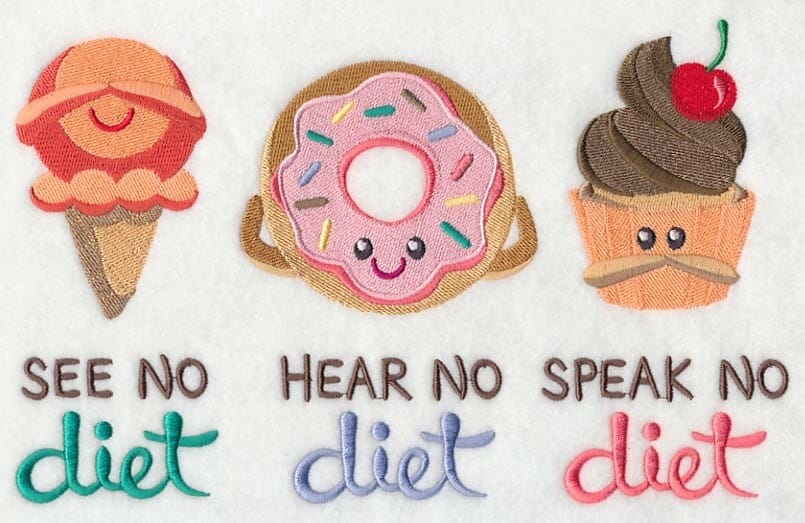The mere thought of going on a diet plan is enough to make someone reach for the cookies and hold on for dear life. Fat loss OR ice cream? How about both! When most people think of a diet they think of bland food (thankfully, not you because IIFYM and flexible dieting for the win!), endless hours of cardio, and going to bed every night curled in the fetal position holding their poor, rumbling stomach as they cry themselves to sleep.
Thankfully though, since you’re on the IIFYM website, you know that isn’t the case! Many individuals aren’t even sure where to start with their diet, and, unfortunately, set themselves up for failure from the get-go.
Check out the IIFYM macro calculator or one of our coaches to get the best advantage possible. Plus, the news gets even better! You don’t need to diet yourself into the ground in order to see fat loss. Plus, implementing flexible dieting means you get to bring the shreds, and hold onto the food you love. Don’t believe me? Continue reading…Cue mind being blown.
Diet Break
It’s exactly what it sounds like. Taking a break from your diet. Pausing your calorie deficit AND allowing it to aid in fat loss. But don’t worry, you and your diet plan will be reunited soon enough. (And you’ll be on much better terms).
Plus, pairing a diet break with IIFYM, you’ll be in macro heaven. In the most basic terms, a diet break is a brief interlude from your calorie deficit, as well as a reduction in cardio. This can be executed in two different ways.

The Full Diet Break
This method is best suited for individuals who aren’t in contest preparation and not restricted by time constraints. A full diet break consists of 10-14 days of tracking a little more loosely. What’s important is to continue eating at your normal times, and strength train as usual.
Along with these changes, your amount of cardio will be reduced by 50%. That’s right…more food AND less cardio. Feeling uneasy? Talk to one of our coaches to see if this approach is best for you. This diet break strategy is one we use with our clients that have been dieting for 16-20 weeks, feeling lethargic and have stalled with weight loss 3 or 4 times already.
Our coaches have the experiences to provide you with your proper diet break macros in your Macro Blueprint.
The Partial Diet Break
This method is best for competitors, or those coming off of an extreme deficit. Unfortunately, many competitors don’t give themselves enough time to be able to implement a diet break; which could be notably beneficial for fat loss.
Plus, using IIFYM and flexible dieting along with a diet break makes the process much easier, and generally, keeps the dieter sane; because let’s be honest. We can’t abstain from the sweet stuff forever.
In an attempt to maintain homeostasis our body adjusts as it sees fit; generally by stalling weight loss.
The difference between the full diet break and the partial diet break is during the partial, you can either add roughly 500 calories or increase calories by 20% to perceived maintenance regardless of your weight loss goals.
Rather than loosely counting, you continue tracking as usual. But, with a substantial increase in calories. Again, talking to one of our coaches to see what approach is best for you is a great place to start.

Mental Benefits of a Diet Break
While dieting, it’s inevitable that our stress levels increase. Weighing in weekly; your calories and sanity hanging in the balance. If you’ve dieted before, you’ve been there. Your weekly check-in determines if you get to hold onto those precious carbs.
Or, if you’ll be kissing that nightly bagel goodbye and saying hello to an extra 20 minutes with your mistress; elliptical trainer.
Knowing that another calorie cut is imminent is enough to send your stress levels through the roof. But hey, at least you kissed that bro diet plan goodbye and welcomed flexible dieting into the family. Happy thoughts, right?
Observing Fat Loss in the Long Term
Another interesting point to note, which will sound obvious, is that fat loss is not instantaneous. It takes time; and a lot of it. So, the thought of this is usually off-putting to most. Sacrificing sitting down and mowing down an entire box of Oreos (highly doubt THIS fits your macros) is something not everyone wants to give up.
Especially if your goal is a significant amount of fat loss. An extended, several months, or even up to a yearlong diet plan sounds atrocious. Thankfully, if you follow IIFYM, it isn’t AS painful, but dieting regardless of circumstances can be a long tumultuous road.
Also, IIFYM, paired with a diet break, and an end in sight, make your weight loss journey feel more doable. Take, for instance, a weekly refeed, this is enough to get a competitor through the week.
The knowledge that within several days they get a break from the monotonous routine of salads and veggies for every meal. (Hello, poverty macros and flashbacks of life before IIFYM!) There are rough guidelines for such breaks. The leaner you are, the more often you’ll need a diet break. This below chart is outlined for men, and as a general rule, women should add 7% to body fat.

The frequency of Diet Breaks
[table “7” not found /]
As you can see from the chart above, this gives the dieter a substantial recess physically and mentally, along with aiding in the overall fat loss. Having an end in sight and a solid time frame makes the thought of dieting much more palatable.
Physiological Benefits of a Diet Break – More Fat Loss!
The physiological benefits come down to hormones. While dieting, certain hormones levels go up, while others go down. In an attempt to maintain homeostasis our body adjusts as it sees fit; generally by stalling fat loss.
Your body is not concerned with getting your body lean enough to strut your stuff in a swimsuit.
Along with weight loss, another benefit that should be noted is the likely increase in performance due to the calorie elevation.
Your body is concerned with keeping you alive and healthy. In an attempt to preserve precious fat stores, your body lowers testosterone, thyroid, and leptin.
While increasing cortisol and ghrelin. This means low energy, extreme hunger, lack of sleep and irrational irritability (how DARE your roommate drink your last diet coke!).
The “Whoosh” Effect
 Especially through a long dieting phase, hormones can shift so much that fat loss stalls altogether, sleep quality further decreases, and workouts suffer. Plus, once your calories reach an all-time low, IIFYM isn’t as fun as it once was. You begin yearning for those Cheerios.
Especially through a long dieting phase, hormones can shift so much that fat loss stalls altogether, sleep quality further decreases, and workouts suffer. Plus, once your calories reach an all-time low, IIFYM isn’t as fun as it once was. You begin yearning for those Cheerios.
This is where a diet break can be hugely beneficial. If you’ve dieted before, you’ve probably experienced this phenomenon; a giant family dinner, relaxing, kicking back and enjoying yourself with zero stress after a long week of low calorie.
If you believe that you need a diet break, then let one of our coaches provide your diet break macros in your Macro Blueprint!
The next morning you wake up and wah-la! You feel lean AND the scale is down several pounds. How could this be? Well, unfortunately, this is not an overnight weight loss (as badly as we wish it were). In the bodybuilding world, this is referred to as the “whoosh” effect.
The increase in calories temporarily lowers cortisol levels, thus releasing the excess water being stored in our bodies. Plus, the extra glycogen filling your muscles, forces water out. Now, as I said, this is generally just water. But, the lowering of cortisol has massive effects longer term.
Balancing Those Precious Hormones
When calories are increased back to maintenance and cardio is dialed back, it gives the hormones a chance to get to a more normalized level. This means more fat loss and more of those much missed and well-deserved goodies IIFYM has allowed you to have in your diet.
Can you say win-win? Through strict dieting phases, metabolic rate slows. Your metabolism is not a singular entity. It is comprised of dozens and dozens of hormones throughout the body.
It’s important to maintain the diet break for the suggested time (10-14 days) because, after about 7 days, hormones begin to regain balance, and the following 3-7 days ensures they reach maximum potential.
In simple terms, regaining this balance gives your body the break it needs to start letting go of unwanted weight. It is important to note that an increase in carbohydrates is important because of the thyroid, as well as leptin, are particularly sensitive to them. So an increase (100-150g/daily minimum), would be sufficient to elevate thyroid and leptin enough to a higher functioning level.

Start Loving Your Happy Place Again
Along with fat loss, another benefit that should be noted is the likely increase in performance due to the calorie elevation. We’ve all been there. Your one-time happy place has become a chore. You have zero energy, and the lower the calories, the less energy you must execute a killer workout.
So, a slight pause could be what you need to get your groove back in the gym and potentially gain back that lost strength. Those extra carbs are enough to make you feel like you could crush your last PR. (Use that carb high with caution.)
Summary
There are substantial benefits, both physically and mentally, to implementing a diet break; even more so when paired with IIFYM. So, you can either follow a diet plan that drives your metabolism into the ground (which many do) or give yourself a break and ultimately increase the likelihood of more weight loss and overall success in the long run.
Get in touch with one of our coaches to help you calculate your diet break macros. Remember, weight loss is a marathon, not a sprint. Work smarter not harder. Okay, enough clichés. You get the point.
No comments:
Post a Comment